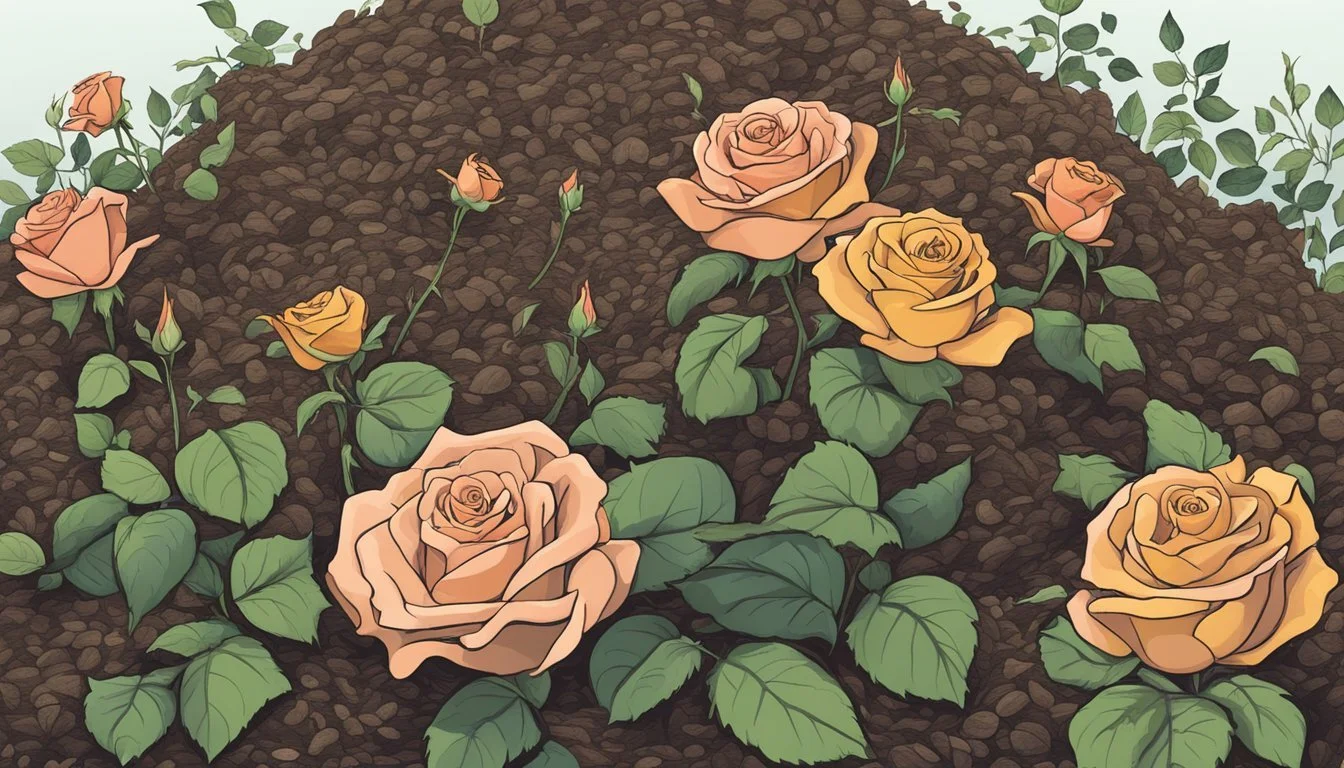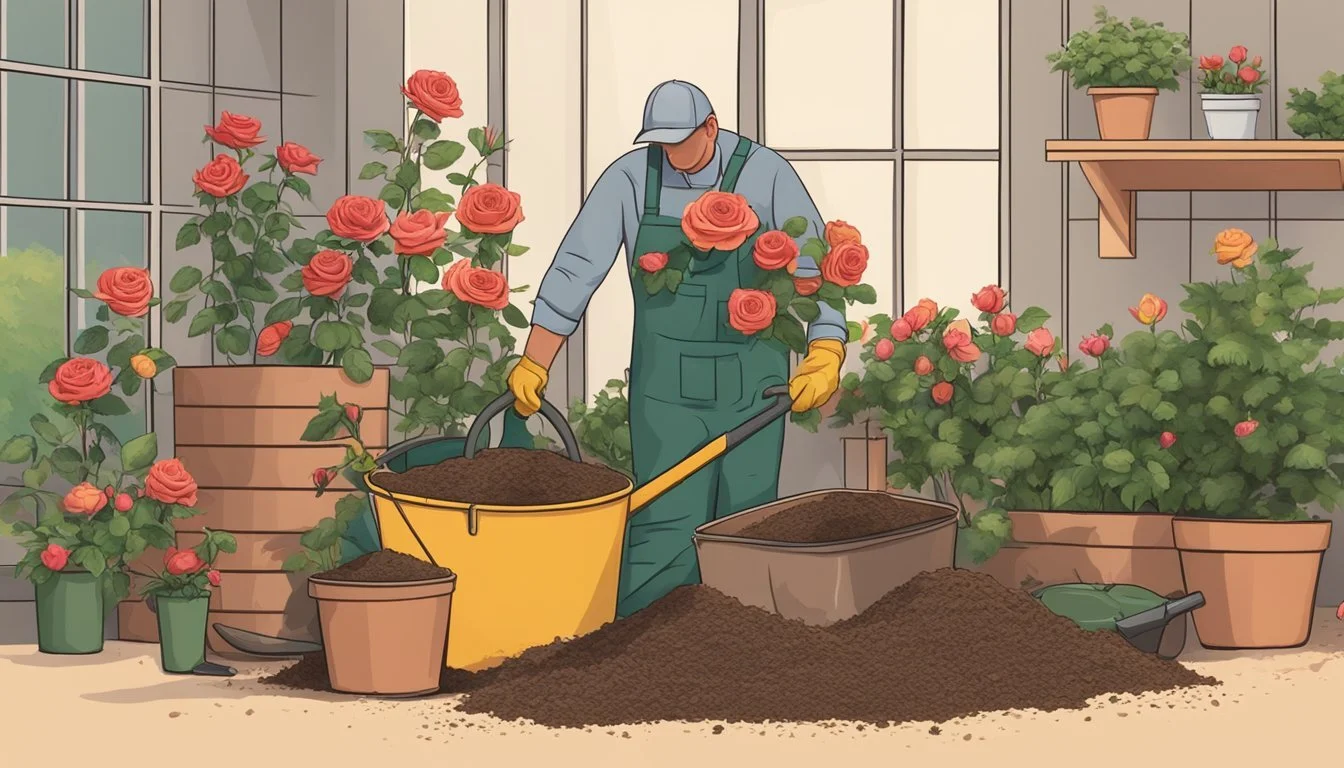Can You Compost Roses?
Understanding the Basics of Floral Waste Recycling
Roses are a staple in many gardens, renowned for their beauty and variety. As part of regular garden maintenance, roses often produce clippings, spent blooms, and fallen leaves, leading gardeners to question whether these organic materials can contribute to their composting efforts. The answer is affirmative; rose remnants can indeed be composted. They belong to the 'green' category of compost materials which provide nitrogen, an essential element that aids in the decomposition process of the 'brown' compost materials like dried leaves and twigs.
When it comes to utilizing roses in a compost heap, it's important to consider the condition of the plant material. Rose cuttings, leaves, and petals without any sign of disease are excellent additions to the compost pile. However, rose leaves afflicted with blackspot or other diseases should be excluded to prevent the spread of pathogens through the compost. It's this sort of careful selection that ensures the resulting compost is beneficial rather than detrimental to the garden ecosystem.
By composting roses, gardeners can transform what would be waste into a rich, organic amendment for their soil, enhancing its structure, fertility, and moisture retention. This cycle not only nurtures the garden but also embodies the sustainable practice of returning plant matter to the earth, reducing overall waste. Roses, therefore, can play a dual role in the garden: as a source of aesthetic pleasure and as contributors to the garden’s ongoing health through composting.
Benefits of Composting for Roses
Composting is a pivotal practice for rose gardeners, aiming to improve plant health and vigor through natural processes. It enhances soil structure, provides essential nutrients, and optimizes water management.
Enhancing Soil Quality
Composting contributes to the overall quality of soil by adding organic matter. This decomposition process converts spent rose blooms and clippings into a rich, humus-like material, improving the soil's texture and structure. Increased organic content makes soil more aerated, allowing roots to penetrate easily and establish more efficiently.
Providing Essential Nutrients
As roses require a wealth of nutrients for optimal growth, compost serves as a slow-releasing source of vital elements like nitrogen, phosphorus, and potassium. These elements are present in decomposed organic matter, contributing to:
Nitrogen: Essential for leaf growth and vibrant blooms.
Phosphorus: Supports strong root development and flower formation.
Potassium: Improves overall plant health and disease resistance.
Improving Drainage and Water Retention
The delicate balance of drainage and water retention is crucial for rose health. Compost improves soil amendment by creating a more porous soil structure, which:
Prevents waterlogging by enhancing drainage.
Increases water retention during dry periods, reducing the need for frequent watering.
Incorporating compost into a rose garden offers multiple advantages. It provides a robust foundation for the plants to thrive, ensuring a healthy and blooming garden throughout the season.
Preparing Roses for Composting
When composting roses, one must be selective about the parts used and take care when dealing with diseased plants to create a healthy compost environment.
Selecting Suitable Rose Parts
Flowers and Leaves: The petals and leaves from rose plants are excellent for composting as long as they are free from disease.
Suitable:
Fresh petals
Fallen leaves
Unsuitable:
Thorny stems
Woody branches
Thorny and Woody Stems: The thorns and woodier parts of the rose bush should be avoided or treated before adding to the compost. They take much longer to break down and can potentially cause harm if not handled properly.
Handling Diseased Plants
Identification: Be vigilant in identifying signs of disease, such as the presence of black spot disease on leaves.
Signs of disease may include:
Black or brown spots
Wilted or distorted foliage
Disposal: Diseased rose parts should not be added to the compost as they can spread pathogens. They are best disposed of by other means.
Do not compost:
Leaves with blackspot or other visible diseases
Flowers showing signs of rot or mildew
By following these guidelines, gardeners can ensure that the composting process for roses is both effective and safe, contributing to the health of their garden without spreading disease.
Composting Methods
There are several effective composting methods suitable for rose waste. Each has distinct requirements and benefits when it comes to breaking down organic materials like rose flowers, soft green stems, and leaves.
Cold Composting
Cold composting is a passive method, which involves layering organic materials—such as manure, mulch, and fallen leaves—from roses and other garden waste in a compost bin or pile. The materials decompose over time, typically 6-12 months, without the need for regular maintenance. This process relies on the natural activity of soil organisms.
Hot Composting
Hot composting is a more active process requiring a balanced mix of 'greens' (nitrogen-rich materials) and 'browns' (carbon-rich materials). For roses, this means adding the green parts of rose cuttings to the compost alongside materials like dry leaves or straw. This method also involves monitoring the temperature, which should stay between 135°F and 160°F, and turning the pile periodically to maintain aeration. Hot composting can decompose rose and garden waste more quickly, typically in 1-3 months.
Vermicomposting
Vermicomposting utilizes worms, usually red wigglers, to break down softer organic waste, such as rose petals and leaves. These worms digest the waste, turning it into nutrient-rich worm castings—a type of garden compost highly beneficial for roses. Vermicomposting can be done indoors or outdoors and is especially suitable for small-scale composting. It does not include the use of woody or thorny parts of roses, as they can harm the worms.
Choosing the Right Compost Mix
The key to successful rose composting lies in selecting the appropriate ingredients and maintaining proper ratios. This ensures roses receive the nutrients they need for optimal growth and health.
Compost Ingredients
Organic Materials: The best compost for roses typically includes a variety of organic materials. These should be a mix of green and brown matter.
Green Materials: Examples include grass clippings, fresh rose cuttings, leaves, and petals. They provide nitrogen.
Brown Materials: Dry leaves, twigs, and wood chips serve as sources of carbon.
Enrichers:
Alfalfa: Adds nitrogen and is particularly beneficial for rose growth.
Coffee Grounds: They add nitrogen and are slightly acidic, which can help maintain the pH balance.
Blood Meal: An excellent source of nitrogen.
It is generally advised to avoid using mushroom compost for roses as it can be too alkaline, especially if one is dealing with ericaceous (acid-loving) plants.
Compost Ratios
For optimal decomposition and nutrient balance, maintaining the right carbon to nitrogen ratio (C) in your compost pile is crucial.
Ideal Ratio: Aim for a carbon to nitrogen ratio of about 30:1.
Layering Method:
Start with a brown layer (like wood chips or dry leaves), then add a green layer (grass clippings or fresh greens).
Sprinkle enrichers like alfalfa, coffee grounds, or blood meal.
By keeping a balanced compost mix, roses can thrive, receiving the nutrients and soil structure they need without the need for synthetic fertilizers.
Application of Compost to Rose Gardens
Compost serves both as a soil amendment and a mild, slow-releasing fertilizer for rose gardens. By understanding the timing and proper method of compost application, gardeners can ensure better feeding for the plants, enhanced root zone health, and adequate drainage which is essential for the thriving of roses.
Timing of Application
Spring: Application should coincide with the onset of the growing season. This timing allows the compost to integrate with the soil, providing nutrients when the roses are initiating growth.
Fall: A lighter application can be beneficial after the main blooming period has ended to prepare the roses for winter dormancy, although it's not as critical as the spring feeding.
Method of Application
Top-Dressing: Spread a 2 to 4-inch layer of compost around the base of the roses, extending out to the drip line. It's important to keep the compost a few inches away from the stems to prevent potential rot.
Incorporation during Planting: When planting new roses, mix compost into the bottom of the planting hole and with the soil used to fill the hole. This improves the soil structure, provides nutrients, and enhances root growth and drainage from the outset.
Soil Considerations for Rose Composting
The success of composting roses is intricately linked to understanding and optimizing the soil's attributes, especially its pH and structure. These factors significantly influence the decomposition process and the eventual quality of compost for healthy rose growth.
Understanding Soil pH
Soil pH is a critical measure that affects the breakdown of organic matter and the availability of nutrients to plants. For roses, the ideal soil pH should lie between 6.0 to 7.0, which is slightly acidic to neutral. Composting can alter the soil pH, thereby affecting rose health:
Acidic Compost: If compost is too acidic, it can lower the soil pH below the optimal range for roses, potentially inhibiting growth.
Alkaline Compost: Conversely, compost with a high pH can make the soil too alkaline, impacting nutrient uptake.
Adjusting the pH of the compost before application ensures the soil remains conducive for robust rose development.
Optimizing Soil for Roses
Roses prosper in loamy soil, a mixture that includes sand, silt, and a small percentage of clay. This ideal soil comprises:
40% Sand: Improves drainage and aeration.
40% Silt: Offers nutrients and retains water.
20% Clay: Provides water retention and nutrient content.
To optimize soil for roses, one should incorporate organic compost that enhances the loamy characteristic, making it rich and fertile:
Organic Compost: Add organic matter such as decomposed rose flowers, soft green stems, and leaves. Avoid thorny and diseased plant parts.
Texture and Fertility: Applying a layer of compost improves soil texture and fertility, favoring the root development necessary for healthy roses.
By ensuring the soil has the correct pH and is well-aerated with a loamy structure, gardeners can create an environment in which roses and the compost applied to them will thrive.
Maintaining a Healthy Rose Garden
Maintaining a healthy rose garden requires consistent management practices including weed control and pest management. Attention to these aspects ensures optimal conditions for growing roses.
Controlling Weeds
Weeds compete with roses for essential nutrients and water, potentially stunting growth. Consistent weed control is vital for a thriving rose garden. Gardeners can employ mulching techniques; applying a layer of well-matured compost can suppress weeds and also condition the soil. A regular schedule of weeding by hand may be necessary to remove invasive species that are not deterred by the mulch.
Managing Pests
Pests such as aphids, beetles, and mites pose a threat to rose gardens. Integrated Pest Management (IPM) strategies can be implemented to control pest populations effectively and with minimal chemical intervention. Natural predators, like ladybugs and lacewings, should be encouraged as they consume common rose pests. For direct treatment, solutions containing neem oil can act as a natural pesticide, offering a defense against a variety of harmful insects without damaging the roses.
For optimal rose health, nutrients like calcium and epsom salts (magnesium sulfate) can be added strategically to promote strong cell walls and vigorous growth, respectively. Bonemeal is another natural source of nutrients that can be used to fortify the soil with phosphorus, essential for healthy root development. Proper watering techniques ensure that the roses receive adequate moisture without contributing to conditions favorable to pests or diseases.





